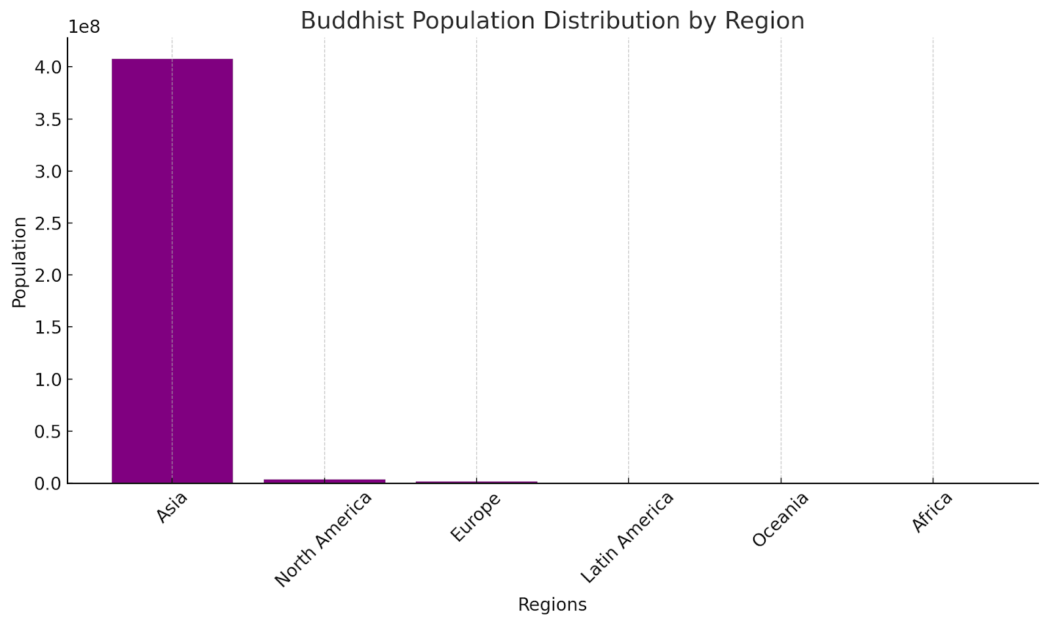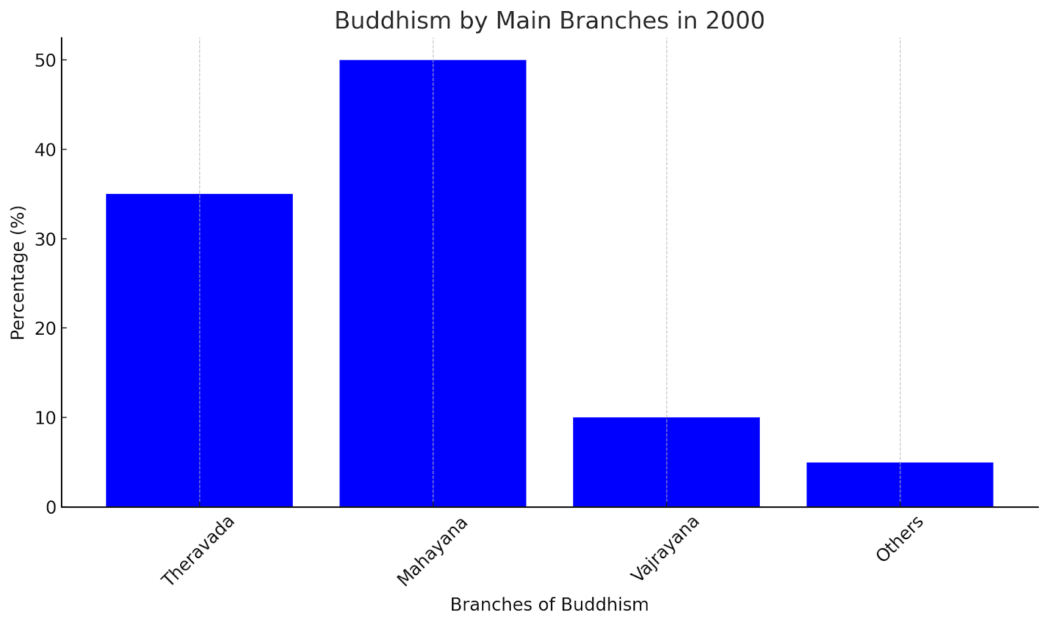Buddhism, in its essence, is a mosaic of diverse teachings rather than a single unified religion.
Its vast expanse is divided into numerous schools, yet three primary branches stand out:
- Mahayana: Encompassing the majority, this branch had approximately 56% of global Buddhists identifying with it in 2000. Often referred to as the Great Chariot, its following is immense;
- Theravada: Holding the title as Buddhism’s ancient branch, Theravada schools boasted 38% of the world’s Buddhist populace in the said year;
- Tibetan Buddhism: This unique form of Buddhism claims the allegiance of about 6% of the worldwide Buddhist community.
Diving into demographics, a staggering 87% (roughly 408 million) of the Buddhist community reside in Asia. As one ventures beyond Asia’s borders, North America and Europe emerge as secondary hubs, with 3.7 million and 1.7 million Buddhists respectively. However, Buddhism’s influence dwindles in regions like Latin America (672 thousand), Oceania (448 thousand), and Africa (247 thousand). These numbers reflect the diverse global reach of this ancient tradition.

The graph highlights the predominant presence of Buddhists in Asia, followed by significantly smaller populations in North America and Europe, and even smaller numbers in Latin America, Oceania, and Africa. This visual representation showcases the diverse global reach of Buddhism.
Buddhism by Main Branches in 2000:

Buddhism’s expansive nature and deep roots have been cultivated over thousands of years. Its teachings have traversed numerous landscapes, adapting and transforming according to cultural and regional nuances. Interestingly, the distinction between its branches is not merely numerical. Each branch offers a unique perspective on enlightenment, practice, and philosophy.
Mahayana, for instance, places an emphasis on the ideal of the Bodhisattva, an enlightened being who forgoes personal nirvana to aid others. This branch is particularly influential in East Asian countries like China, Japan, and Korea. Its teachings are vast, encompassing various sutras and philosophical treatises that guide its adherents on their spiritual journey. Theravada is often seen as the more orthodox form of Buddhism. Predominantly followed in countries like Sri Lanka, Thailand, and Myanmar, its teachings hinge on the earliest Buddhist scriptures known as the Pali Canon. Meditation and monastic life play crucial roles in this tradition.
Conclusion
Tibetan Buddhism is rich in rituals, mantras, and practices that intertwine with the indigenous Bon religion of Tibet. Led by figures like the Dalai Lama, it showcases a vibrant mix of meditation techniques, visual arts, and intricate ceremonies. Furthermore, the expansion of Buddhism beyond Asia is a testament to its universal appeal and adaptability. In places like North America and Europe, the religion has been embraced, studied, and practiced by people seeking spiritual growth and insight.
